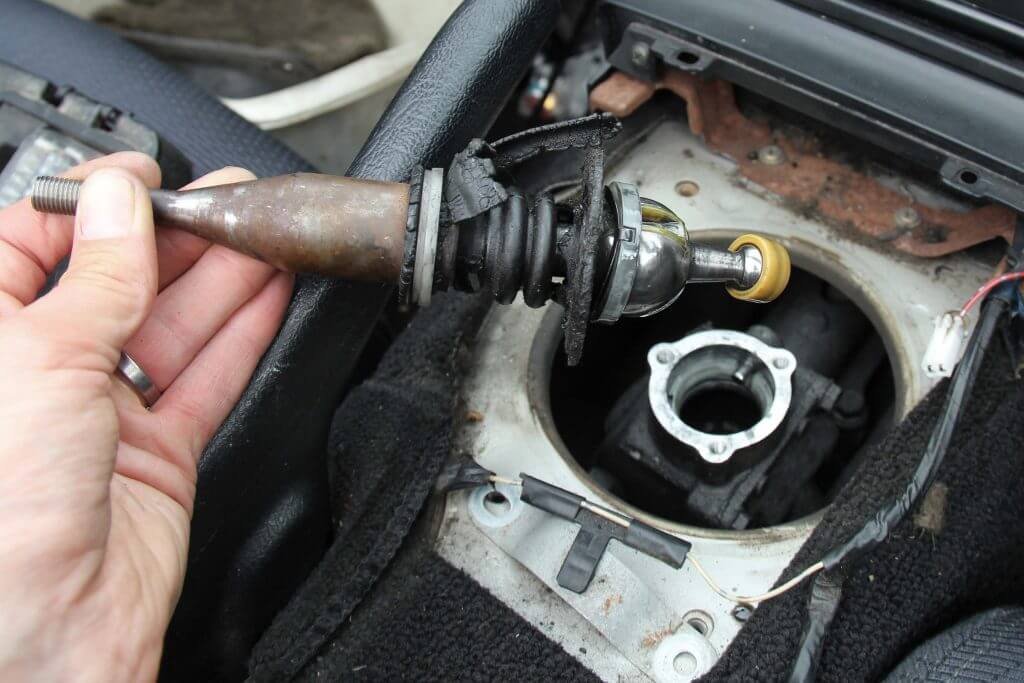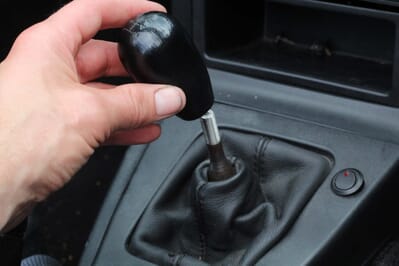The clutch & gearbox on your MX5 will get some hammer so it's important to keep them in tip-top condition, so here's our handy guide on what you need to look out for and know along with some handy upgrade options
Your car's clutch and gearbox is a complex mechanical system that controls the application of power from the engine to the driveshaft. It experiences more wear and tear over time than most other parts of your MX5 due to the heat and friction produced by their many moving and interacting components. If one of these fails it can leave you well and truly stranded, so as prevention is always better than cure, We've put together a few things you can look out for which should keep you going.
The signs of a failing system
There are many different symptoms of a failing transmission system you should look out for such as whining, clunking or grinding noises, a burning smell, lack of response, difficulty changing gear and a sticking pedal. Paying attention to any of these abnormalities early on will save you a lot of headaches further down the road.
Is it the clutch or gearbox?
There is a simple test that you can perform which will tell you either way. With the engine off, try and select a gear. If you can, then the clutch or one of its components is at fault, if you can't then the problem most likely lies with the gearbox. Most gearbox issues will require a specialist to properly diagnose and repair it, so we would recommend getting your car looked at as soon as you can.
Working on the clutch
The clutch system however, is much easier to work on with the majority of jobs being well within the capabilities of most home mechanics. It is made up of several components, the main ones being the cover, friction plate, release bearing, flywheel, slave and master cylinders. All these work together so when the clutch pedal is pressed, under hydraulic pressure from the master and slave cylinders, the release bearing moves the friction plate away from the flywheel disconnecting the drive. When the pedal is then depressed the plate comes back in contact with the flywheel and away you go.
Do you ride the clutch?
As We've said before, these parts will naturally wear over time through repeated use, however treating your clutch with a little respect can go a long way. Keeping your foot resting on the clutch pedal whilst driving (known as riding the clutch) is one of the biggest causes of premature, failure particularly to the friction plate as it won't be fully in contact with the flywheel which will cause it to slip and wear. Releasing the pedal too quickly also damages the clutch.
Keep the Hydraulic Fluid topped up
Something else that is often overlooked that can prevent problems is regularly changing the hydraulic fluid. Over time, dirt will build up in the fluid and can damage the slave and master cylinders. It will also lose its hydraulic properties due to a build-up of moisture which settles in the low point of the system. Keeping the fluid topped up and regular bleeding of the system is a simple job that can save you a lot of hassle in the long run.
How do you know if your clutch is failing?
The good news is that clutches usually don't just fail. There will be early tell-tale signs so here are a few things you should look out for.
1. Is it starting to slip?
If your clutch is slipping you'll notice that when you release the pedal and accelerate, the engine will rev but you won't speed up as fast as you normally would. It can also be accompanied by an acrid burning smell and sometimes even smoke.
Slip occurs because the clutch mechanism employs a plate that uses friction to join it to the flywheel where they move at the same speed. If the friction material is getting towards the end of its life, the clutch plate will start moving at a different speed to the flywheel. This won't allow full engine power to be transmitted through the gearbox to the wheels.
Usually, a clutch will start to slip long before it fails completely, so as long as you don't ignore it, you can replace it without leaving yourself car-less. Always replace the friction plate, bearing and cover together as they will have worn together over time. Whilst everything is apart we also recommend replacing the pilot (also known as the spiggot) bearing. This is a small roller bearing located where the input shaft comes into the clutch housing and can also be worn or noisy.
We stock a good range of high-quality standard clutch kits such as Exedy, IL Motorsport and even the original Genuine Mazda version along with the majority of other parts associated with changing a clutch so here are the useful links you'll need for the clutch and gearbox section depending on which Mk you have.
2. Is it sticking?
The opposite to a slipping clutch is one that sticks. This happens when the friction plate doesn't release from the flywheel properly when you push the pedal down and will make it difficult to engage gears. The cause of this is usually something within the hydraulic system such as a low fluid level, old or dirty fluid or a fluid leak, all of which can prevent sufficient pressure being exerted through the system. The most common part on the MX5 to fail, particularly on the Mk1 & Mk2 is the slave cylinder. This small but essential part of the system takes hydraulic pressure from the master cylinder and through a push rod operates a fork which in turn operates the release bearing.
It is located under the front right-hand wheel arch so put the steering on full lock and have a look to see if it is wet with fluid. Other common parts that can leak are the master cylinder, which is located on the bulkhead in the engine bay, or any of the pipes and hoses that connect it all together. As you would expect we have all the necessary parts in stock including Genuine Mazda and IL Motorsport slave cylinders, master cylinders, cylinder repair kits and stainless steel clutch lines to name but a few.
Don't forget that with any hydraulic repair you will also need brake & clutch fluid. We keep Mobil Dot 4 in 1-litre bottles which is perfect for the job - click here for the product.
3. Notchy gear change
Another common problem is a notchy or stiff gear change. This is when moving the lever between the gears is no longer as easy and smooth as it once was. Other than the clutch sticking, the most common cause of this on MX5's are the gear lever shift boots. Located underneath the gear lever, these rubber boots wear and deteriorate over time leaving gear changes a less than pleasant experience.

Another sign these boots need replacing is getting excessive heat through the gear lever itself as they are the only thing that prevents heat coming up through the transmission tunnel. This is another simple fix using either our Genuine Mazda or IL Motorsport shift boot kits and can be done by removing the centre console, undoing the bolts holding the larger upper boot in place, and the bolts that fix the smaller lower boot to the top of the gearbox.
The Genuine Mazda kit also comes with the small nylon cup that goes on the ball at the end of the gear lever. These go brittle with age and break so are definitely worth replacing at the same time.
If you own a Mk1 or Mk2, check out our blog on refreshing your transmission for a full guide on how to do this - Click here
Recommended upgrades
Despite the short-shift manual gearbox being a defining feature of the MX5, there is always room for improvement. We have a vast range of upgrades available for all models, some of which include:
- Exedy Organic & Cerametallic Clutch Kits - These kits have friction plates that can handle the abuse of higher-powered vehicles that exert much more torque through the transmission than standard cars making them the perfect choice for aggressively driven or track day cars.
- Ultra-Light Flywheels - These ultra-lightweight performance flywheels are designed to reduce weight and inertia for improved throttle response and acceleration. Suitable for use with standard or upgraded clutches, they feature a trouble-free one-piece design, integrated starter ring and last longer due to the heat-treated friction surfaces.
- IL Motorsport Short Shift Kits - These kits can reduce the shift throw by up to 45% and give crisp and precise gear changes further enhancing the overall sports car experience. These kits are made from top quality stainless steel and completely replace the existing gear lever.
- Hel Performance Stainless Clutch Lines - Original clutch hoses are rubber and expand under the normal pressure of use. This expansion of the line can negatively affect the operation of the slave cylinder, making for a 'mushy' feel to the pedal. These stainless steel braided versions will not expand under pressure giving better overall clutch control.
- Competition Diff Mounts - Although located at the other end of the car, these mounts are considerably stiffer than the originals which reduces shudder through the whole transmission system which in turn helps improve gear change.
Handy website links
If you have any further questions or need some advice, please get in touch


Leave your comment